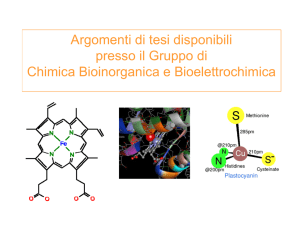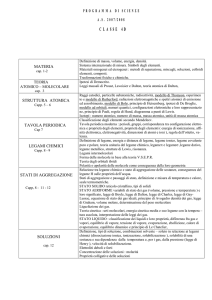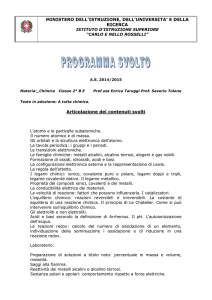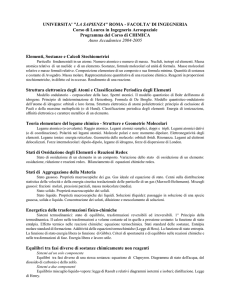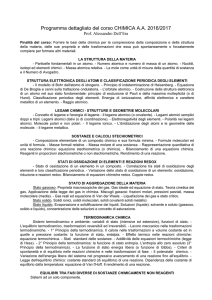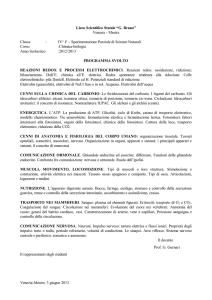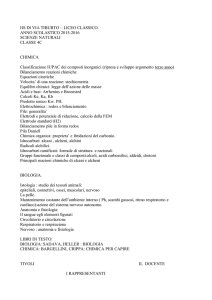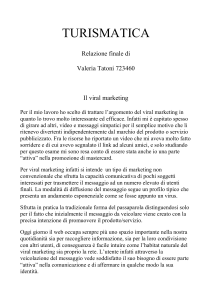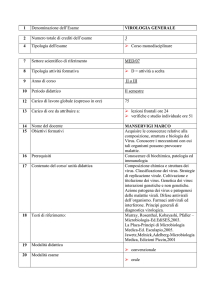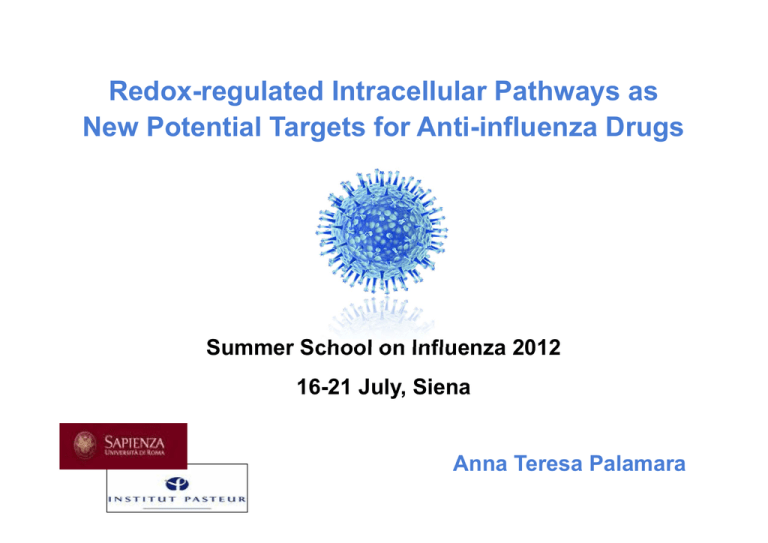
Redox-regulated Intracellular Pathways as
New Potential Targets for Anti-influenza Drugs
Summer School on Influenza 2012
16-21 July, Siena
Anna Teresa Palamara
Summary
• Redox balance of eukariotic cells
• Effects of influenza virus infection on
intracellular redox state and redox regulated
pathways
•Effects of redox modulating compounds on
influenza virus replication
ROS/RNS: sources and cellular response Endogenous sources
Mitochondria
Peroxisomes
Lipooxygenases
NADPH oxidase
Cytochrome P450
Nitric Oxide synthase
Regulation of
cell functions
Antioxidant defences
CAT, SOD, GSH-Px, Trx,
GSH
Vitamins (A,C,E)
Homeostasis
Exogenous sources
UV
Radiation
Chemiotherapy
Inflammatory cytokine
Environmental toxins
Alteration in
cellular functions
General
cell damages
Cell proliferation and differentiation,
Immune responses
inflammatory responses
Alteration
In redox regulated
metabolic pathways
Cell death, Ageing
Cancer, Neurodegeneration
Virus/host cell interactions play a key role in the pathogenesis of
viral-induced diseases
Fas
L
Fa
s
Redox
imbalance
NOXs
?
FADD
NO
ROS
GSH
Caspases
P
Apoptosis
NFkB
P
P
Kinases
K
K
NF-kB
AP1
INFLAMMATION
FATE OF INFECTED CELLS
(death/survival)
IRFs/STATs
VIRAL REPLICATION
IRF, STAT
IMMUNE RESPONSE
CHRONIC-DEGENERATIVE
EFFECTS
Redox state and viral infections
HIV
Garaci E. et al. (1997). J.Leuk. Biol.
Stehbens W. (2004). Exp. Mol. Pathol.
Wallace DR., (2006). J. Biomed. Biotechnol.
Savarino A., et al., (2009) Retrovirology
Huang W. et al., (2011) FASEB J.
Palamara A.T. et al. (1992). B.B.R.C
INFLUENZA/ Flory E., et al. (2000). J. Biol. Chem..
PARAINFLUENZA Nencioni L., et al. (2003). FASEB J.
Sgarbanti R., et al., (2011) Antiox.& Redox Sign.
Vlahos R., et al., (2011) PLoS Pathogen
HSV-1
HEPATITIS C
RHINOVIRU
S
Palamara A.T. et al. (1995). Antiviral Res.
Stehbens W. (2004). Exp. Mol. Pathol.
Tardif K.D. (2005). Trends Microbiol.
Steingart RA., et al., (2006). Mol. Cell. Endocrinol..
Seronello, S., et al., (2007). Free Radic Biol Med.
De Mochel N., et al. (2010) Hepatology
Kaul P., et al. (2000). J. Infect. Dis.
Papi A., et al. (2002). FASEB J.
Kaul P., et al. (2002). Free Radic Res.
RED
OX
Different viruses induce an intracellular
PRO-OXIDANT STATE via decrease of GSH
Parainfluenza 1
Herpes Simplex 1
HIV
18
40
1,5
RED
30
12
1
20
10
*
0
*
1
3
hours
6
24
*
*
0
*
6
0,5
*
1
3
hours
6
24
OX
0
0
5
10
days
15
*p<0.001
*p<0.001
*p<0.001
Palamara et al. BBRC, 1992.
Palamara et al. Antiv. Res., 1995.
Garaci et al. J.Leuk. Biol., 1997
Mechanisms involved in parainfluenza1 Sendai
virus induced GSH decrease
20 minutes during viral challenge
24 hours after viral challenge
Ciriolo et al., J Biol Chem (1997)
300
250
200
*
*
**
**
***
***
150
100
50
0
0
*
**
***
24
48
MDCK
NCI-H292
MDCKBcl-2
SH-SY5Y
U937
72
Time (hrs)
*P< 0.05; **P< 0.01; ***P< 0.0001 vs. MDCK cells
IS IT POSSIBLE TO BLOCK VIRAL
REPLICATION AND ITS EFFECTS BY
INTERFERING WITH INTRACELLULAR
REDOX STATE?
Inhibits Sendai and HSV-1 virus…
GSH-C4
Palamara A.T. et al., Antiv. Chem. Chemoth.,2004
Fraternale A., et al. Curr Med Chem, 2006
Redox steps of folding are mediated by
oxidoreductases in the ER
N-glycosylation
Disulfide bonds formation
Ellgaard and Helenius, Nature Rev. 2004
GSH-C4 affects
the expression of viral hemagglutinin
HA= hemagglutinin
NP= nucleoprotein; M= matrix protein
Sgarbanti R. et al., Antioxidants &Redox Signaling 2011
GSH-C4 inhibits influenza virus replication in MDCK cells
*,**P< 0.05
A/ULSTER/H7N1
Sgarbanti R. et al., Antioxidants &Redox Signaling 2011
GSH-C4 affects the redox state of PDI without affecting
cellular glycoprotein secretion in uninfected cells
Intracellular
Secreted
Sgarbanti R. et al., Antioxidants &Redox Signaling 2011
GSH-C4 increases plasma GSH levels with no sign
of toxicity in mice
Sgarbanti R. et al., Antioxidants &Redox Signaling 2011
GSH-C4 increases the survival of
PR8-infected mice
†GSH‐C4
or PBS was administered intraperitoneally once daily to 6‐week‐old BALB/c mice, after inoculation with 1 PFU of PR8 virus. Survival was
observed for 15 days.
*P < 0.05, ** P= 0.001 compared with Placebo treated‐control group
Sgarbanti R. et al., Antioxidants &Redox Signaling 2011
Day 9
Uninfected
Infected
GSH‐C4
Days 40
Uninfected
Infected
GSH‐C4
8360
Days p.i.
6
9
18
40
Uninfected
Alveolar area NI* score
59.85 ± 0.8
0.3
60.27 ± 2.0
0.3
58.98 ± 1.4
0.3
59.10 ± 1.0
0.3
*= necroinflammatory score
**P< 0.05 (two-way ANOVA) compared with Placebo treated-control group.
*** P< 0.05 (t test) compared with control
Placebo
Alveolar area
NI score
47.14 ± 2.6 ***
3
46.91 ± 2.6 ***
4
51.44 ± 2.3 ***
3
50.86 ± 3.4
3.5
GSH-C4
Alveolar area
NI score
51.28 ± 1.8
3
54.42 ± 1.9**
4
54.76 ± 2.1
2.5
56.54 ± 2.0
2.5
Sgarbanti R. et al., Antioxidants &Redox Signaling 2011
Summary
• Redox balance of eukariotic cells
• Effects of influenza virus infection on
intracellular redox state and redox regulated
pathways
• Effect of other redox modulating
compounds on influenza virus replication
Other redox modulating compounds…
...only partially affect viral replication
*
*P< 0.05
*
Survival
X
X
Placebo
RV 20 g/mouse/day
Days of infection
J Infect Dis. 2005; 191(10):1719‐29
RV anti-influenza effect is due to the
inhibition of p38 MAPK mediated VRNP
export
Resveratrol
p38MAPK i
ERK i
% of 24 h p.i. viral
yield
(HAU/mL)
DAPI
NP
100
75
*
*
50
25
**
0
CI
1
5
10
15
20
**
40
RV (g/ml)
*P<0.05 and **P<0.001 vs. Control Infected cells (CI)
J Infect Dis. 2005; 191(10):1719‐29
Is RV an antioxidant drug…?
…No,
when administered to infected cells!
Influenza virus induces different waves of
oxidative stress in the epithelial cells
This oxidative stress seems to be essential for
vRNP nuclear export and HA maturation
Modulation of host-cell functions essential for viral replication
could offer some important advantages:
It affects viral
replication
indipendently from
virus type or strain
It is more difficult
for the virus
to adapt to
It could block
virus-induced
inflammatory cascades
Cell-based anti-influenza
strategies
Adsorption
siRNA
Zhang et al
Budding
BBRC 2009
GSH
THIAZOLIDES
LC3
FASEB J 2003
•Fraternale et al
AAAA
AAAA
AAAA
Autophagosome
INHIBITION OF
AUTOPHAGIC PATHWAY
•Nencioni L et al
Assembly
LC3
Endocitosis
Golgi
J Biol Chem 2009
Translation
Matarrese P et al
J Cell Physiol 2011
Amphisome
Mol Aspects Med 2009
•Rossignol et al
NP
•Sgarbanti R et al
ER
ARS 2011
Post-translational
modifications
Fusion and RNA release
CHLOROQUINE
mRNA
vRNA (-)
Di Trani L et al
Virol J 2007
Import
cRNA (+)
RNP
export
RV
p38MAPK i
ERK i
•Pleschka et al
Nat Cell Biol 2001
•Palamara AT et al
J Infect Dis 2005
•Nencioni L et al
J Biol Chem 2009
REMEMBER…
Antioxidant does not mean
Antiviral...
The “Sapienza” Team
Thanks to
“Sapienza” University of Rome
Dept of Public Health and Infectious Diseases
Lucia Nencioni Rossella Sgarbanti
Donatella Amatore Paola Checconi
Maria Elena Marcocci
Livia Civitelli
Ignacio Celestino
Simona Panella
Marta Aleandri
Dolores Limongi
Simona Anticoli
University of Rome “Tor Vergata”
Dept of Biology
Katia Aquilano
Sara Baldelli
Maria Ciriolo
Giuseppe Rotilio
Dept of Exp. Medicine and
Biochemical Sciences
Enrico Garaci
Istituto Superiore di Sanità
University of Urbino
Institute of Biochemistry “G. Fornaini”
Mauro Magnani
Alessandra Fraternale
Dept of Cell Biology and Neuroscience
Giovanna De Chiara
Animal care service Paolo Coluccio
Mauro Valeri Emanuela D’Amore


